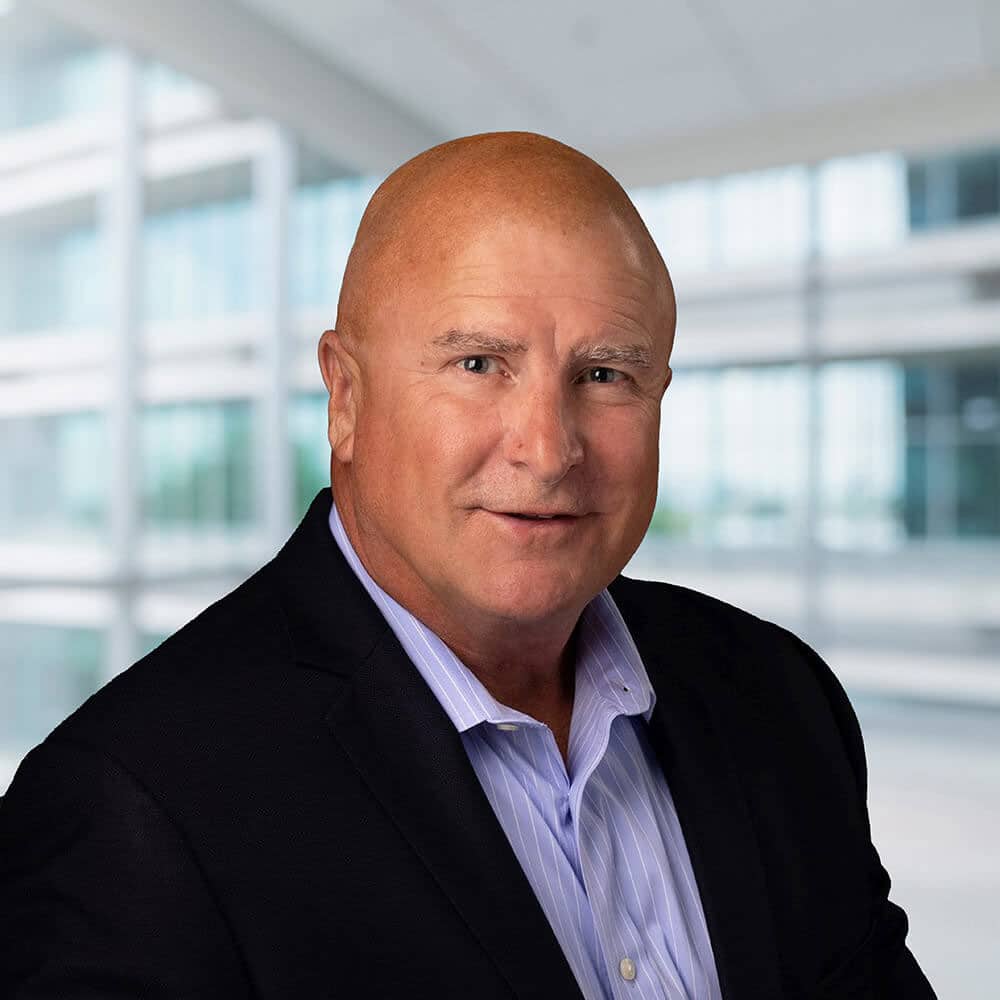With the holidays right around the corner, CIOs have begun pondering next-generation technologies abetting their organization’s digital transformation. Despite a challenging economy this year and a possible recession next year, IT leaders are enthusiastic about buying a wide assortment of gizmos and gadgets.
Interviews with five CIOs/CTOs in the manufacturing, financial services and technology sectors revealed all have plans to invest their budgets in tools that make work more efficient, sales campaigns more precise and customer experiences more enjoyable. What they are not doing is sticking with the status quo.
The splurging is in line with recent forecasts by technology research firms Forrester and Gartner. Forrester’s US Tech Market Outlook for 2022 and 2023 projects the global tech market will experience a robust 6 percent growth rate, “significantly faster than pre-pandemic levels,” the firm stated. Gartner’s global IT spending forecast for next year is a tad lower at 5.1 percent, but nonetheless affirms the importance of IT spending in good times and bad.
“Demand for IT in 2023 is expected to be strong as enterprises push forward with digital business initiatives in response to economic turmoil,” the technology research firm stated, adding that enterprise IT spending is “recession-proof as CEOs and CFOs, rather than cutting IT budgets, are increasing spending on digital business initiatives.”
That’s the plan at public company Steelcase, a more than century-old provider of office architecture, furniture and technology products and services, with $2.8 billion in revenue and more than 11,800 employees. As Steve Miller, Steelcase CTO, summed up his capital investment strategy, “It’s when times are hard that you invest in technology. It’s the one thing that helps you survive the storm.”
Transforming Clinical Trials
Radicle Science has a radical vision for makers of non-pharmaceutical products, giving them a way to clinically prove actual health benefits beyond the placebo effect. The natural health products run a wide gamut, from vitamins, minerals and herbs to fish oil, herbal teas and probiotics. The B-Corp’s crowdsourced direct-to-consumer research leverages AI and machine learning to transform these products into proven safe and effective personalized medicines. “Rather than pay for a clinical trial of every single non-pharmaceutical product, our AI-driven clinical trial process entails using crowdsourcing to collect and analyze big data,” said Jason Liebrecht, Radicle Science CTO.
A recent case in point is a randomized clinical trial researching CBD for sleep outcomes; 1,700 people across the U.S. participated. Five products containing cannabinol were tested, of which four showed meaningful sleep improvements.
Radicle Science previously relied on off-the-shelf software and presently uses Amazon Web Services (AWS) for on-demand cloud computing. Which gets to the CTO’s 2023 wish list: Liebrecht plans to invest a portion of his IT budget on more advanced AI and machine learning solutions, a data analytics warehouse, business intelligence tools and enhanced code security.
Asked to elaborate on the various tech products, he replied, “We’re looking to leverage Amazon’s SageMaker to optimize our algorithms and utilize Polly (another AWS application) for natural language processing to better understand (research) participant sentiment.” SageMaker enables data scientists and developers to build, train and deploy machine learning models in the cloud, guiding users to select the best algorithm for a particular task. Leveraging deep learning technology, Polly converts text into lifelike speech.
The CTO also plans to take advantage of AWS’s Redshift data warehousing and analytics solution to run complex analytical queries at faster speed, Liebrecht said. Another AWS application, QuickSight, provides the sought-after business intelligence. Assuming fulfillment of his wish list, Radicle’s employees can ask questions in natural speech to find interesting patterns or outliers in data.
Liebrecht also plans to improve code security, possibly using Snyk.io, a developer-friendly security platform that monitors for vulnerabilities and fixes them with a single click in less than five minutes.
“The coolest toy on my wish list is a consolidated platform for wearable data,” he said. “If we leveraged data from different health tracking devices like Fitbits, Apple Watch and Garmin, we’d have more accurate and real-time information on someone’s health. In our sleep clinical trial, we relied on patient reported outcomes. Wearable health data would give us empirical evidence supporting the findings.”
Flattening the Learning Curve
At Voya Financial, which serves more than 14 million people with retirement, benefits and asset management products, CIO Santhosh Keshavan is investing a large part of his tech budget this year and next year to help client employees better understand the benefits the financial services company provides.
“Our employee surveys indicate that 35 percent don’t fully understand the benefits they have,” said Keshavan. “They spend more time scrolling down to see which movie they want to watch than comprehending their retirement, financial and health planning benefits.”
Anyone who has tried to pick between three different healthcare plans or investment plans can relate to the inertia. The decisions are so complex that 78 percent of employees in the firm’s survey said they trust their employer to make their benefits decisions for them. “If someone is in the middle of a crushing student loan debt, they’re unsure whether to pay it down now or invest more capital in their retirement. We need to build meaningful applications that make it easier for people to make their own personal choices,” Keshavan said.
The CIO is on a two-year quest that launched in early 2022 to build applications helping employees stay engaged in real time with their benefits, he said. Among the investments is MyVoyage, a personalized financial guidance workplace benefits digital platform. The mobile app is a one-stop solution giving employees a holistic view of their benefits, such as a 401(k) plan and health savings account, in addition to their personal banking and credit card accounts and loans.
The app also offers personalized nudges and actions to navigate different life stages and events. “People don’t want generic advice, they want to know what’s good for them right now,” said Keshavan. “Next year, we’re going deeper and wider in the personalized space.”
Among his plans are an intuitive claims process for supplemental health insurance products like short-term disability. Driven by AI, the new integrated claims system not only notifies employees of a potential claim, it automatically pays it without the employee’s initiation.
Asked how, Keshavan said, “The AI pulls information from the employee’s primary health insurance policy that the person had a serious medical event expected to result in a short-term disability (STD). Knowing the individual has supplemental STD coverage, the dots connect to automatically file and pay the claim on the employee’s behalf.”
Other investments are earmarked to improve the firm’s chatbot, set to be upgraded to resolve customer queries without human intervention. “I’m also interested in buying a new voice biometrics system that can authenticate callers by their voice alone, making interactions more human-like and efficient,” he said.
Phoning It In
At mobility solutions provider Social Mobile, CTO Mike Burr’s digital transformation initiative leverages the Microsoft Azure cloud platform for internal operations and customer-focused solutions. The 12-year-old privately held company’s work entails the customized recreation of approved Google-certified devices like phones and pads into bespoke solutions for use by governments and the healthcare, dining, retail and food & beverage industries. Social Mobile has deployed more than 11 million smart devices globally.
“We use Google’s Android operating system to develop innovative products and solutions for each customer, leveraging our partnerships throughout the mobility ecosystem to offer a true end-to-end solution,” Burr said.
He provided the example of customers in the restaurant sector, an industry digitally transforming around concepts like self-service kiosks and online ordering and delivery. “We sell bespoke mobility solutions like digital menus, on-table ordering and handheld waitstaff devices,” he said.
Burr’s wish list for 2023 includes consolidating Social Mobile’s customer relationship management (CRM), customer support, marketing and website functions into a single solution on the HubSpot platform, which is presently being rolled out.
“Using the platform, different teams here like sales can gain insights into our operations to make better business decisions, viewing open support tickets to personalize the content to each website visitor,” he explained. “By developing tailored messages to each visitor, we’re able to run more efficient sales campaigns.”
Burr has a long list of other wishes. In 2023, he plans to consolidate HR functionality using BambooHR, manage global payroll and benefits through Remote.com, and fire up Lumen5 to generate video content from articles for publication on the company’s website. “I’m also looking to further our advanced analytics capabilities, integrating our ERP system, Microsoft Dynamics Business Central, with our other business intelligence systems,” he said.
Priority Plans
Having moved “most everything to the cloud” in 2022, CIO Matt Watkins’ 2023 wish list at IMA Financial Group is to improve the ease and speed of internal work and client experiences. “We’ve established contact centers for our customers to interact with us through chat, phone or email, but it’s not a seamless experience,” said Watkins. “We’re missing the integration piece.”
He plans to forge the missing link in 2023. Watkins also is looking to make work at the provider of insurance, risk management, employee benefits and wealth management services faster and more efficient. “Our associates are taking data from PDFs and entering it into three different systems, three different ways, which consumes time and can result in data entry errors,” he explained.
Fixing the problem is priority number one, he said. Next year, the CIO will unveil a new Application Programming Interface (API) management platform integrating the firm’s disconnected IT systems to speed up work and make it more efficient. Priority number two involves the use of new workflow automation tools powered by RPA (robotic process automation). Watkins will test out both solutions in pilot trials next year.
Priority number three is advanced analytics. “We stood up a data lake platform this year to pull data together in a central spot,” he said. “Next year, external weather data, satellite information and property-related information will flow into the lake. Using advanced analytics, we hope to produce smarter and better risk models for our insurance and risk management clients. Luckily, this is an organization that’s hungry for more data and analytics.”
The Future of Hybrid
Since Steelcase is well along in its digital transformation journey, CTO Miller has the opportunity to think up truly innovative technology solutions. One idea involves optimizing shared hybrid work experiences beyond customary video calls, synchronizing people’s schedules and workspaces.
“You’ve got people coming into the physical workspace on days where they expect others to be there, but that turns out to not be the case,” Miller said. “They feel they didn’t earn the dreaded commute, which is incredibly frustrating. The good news is that Microsoft is doing some work in this direction.” Steelcase leverages Azure, Microsoft’s cloud computing service.
This work includes more than just scheduling optimization. “What I’m hearing is that there will be ways to learn when colleagues will land at the workspace, which is something we’d be very interested in using internally and in our work for clients,” he said. “More advanced ways to find coworkers with similar interests also appears to be on tap, making remote work more meaningful.”
Assuming these plans reach fruition, Miller is likely to invest in the tools. Also on his wish list is an ERP system “with more low-code, no-code capabilities for our associates to directly apply AI automation without technical debt,” he said. Technical debt refers to the cost of additional rework caused by choosing an easy but limited solution instead of a better one.
The CTO is in discussions with SAP and IBM to develop this next-generation ERP system and plans to “hit the reset button” with it in 2023. “I’m really jazzed about all of the new built-in capabilities,” said Miller, a musician whose office is adorned with a beloved Fender guitar (no, he’s not that Steve Miller, although he is often asked that question).
“The third thing I want under my tree this holiday season is a way to bridge the customized manufacturing we do with a more immersive customer experience; say what you will about the Metaverse, but there’s an opportunity here to do things that weren’t conceivable before,” he said.
Although Steelcase has configured a way to digitally show a prospective customer a desk customized to the buyer’s needs, the rest of the office is left to the imagination. “We’re working on depicting the desk along with a chair, cabinets and other office accessories in virtual reality, which is really cool from a customer experience standpoint,” Miller said. “My engineering team is working with some big players out there to push the button on it. We’re close to cracking the code.”


























































![Social Media Spring Cleaning [Infographic] Social Media Spring Cleaning [Infographic]](https://imgproxy.divecdn.com/9e7sW3TubFHM00yvXe5zvvbhAVriJiGqS8xmVFLPC6s/g:ce/rs:fit:770:435/Z3M6Ly9kaXZlc2l0ZS1zdG9yYWdlL2RpdmVpbWFnZS9zb2NpYWxfc3ByaW5nX2NsZWFuaW5nMi5wbmc=.webp)
![5 Ways to Improve Your LinkedIn Marketing Efforts in 2025 [Infographic] 5 Ways to Improve Your LinkedIn Marketing Efforts in 2025 [Infographic]](https://imgproxy.divecdn.com/Hv-m77iIkXSAtB3IEwA3XAuouMwkZApIeDGDnLy5Yhs/g:ce/rs:fit:770:435/Z3M6Ly9kaXZlc2l0ZS1zdG9yYWdlL2RpdmVpbWFnZS9saW5rZWRpbl9zdHJhdGVneV9pbmZvMi5wbmc=.webp)












